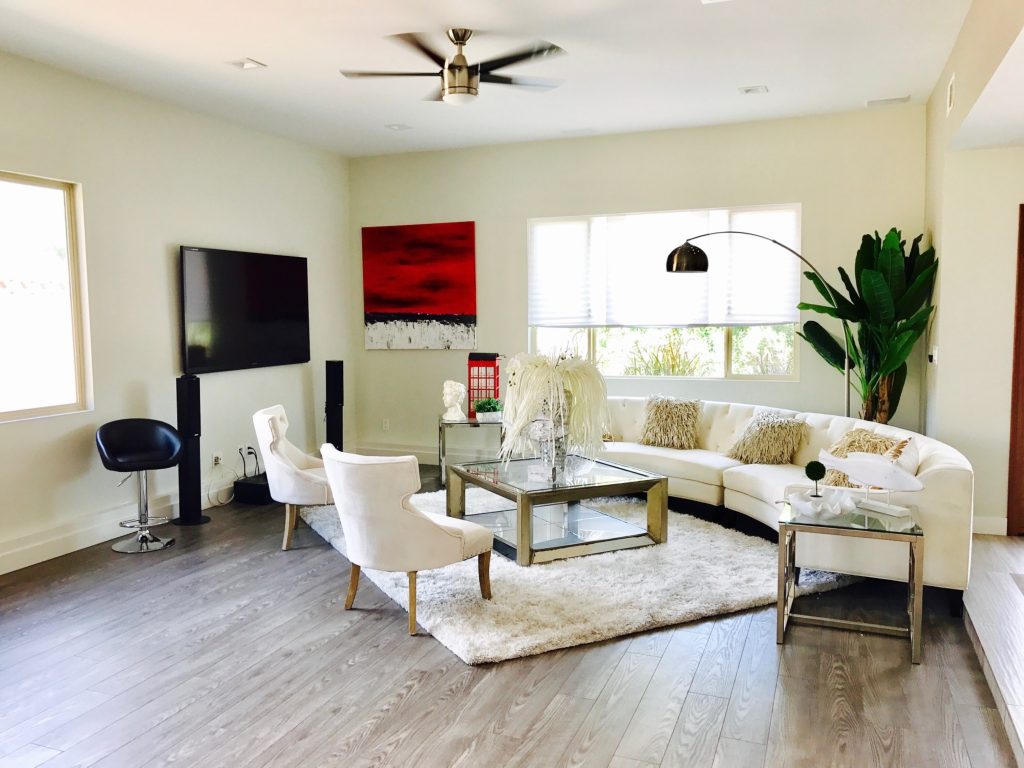If you’ve searched, “Should sofa match wall color?” you’re not alone. This common design query plagues homeowners and renters alike. This comprehensive guide will walk you through every aspect you need to consider.

Why It Matters
Color coordination is more than just an aesthetic choice; it’s a tool for crafting an environment that resonates with your personal style and sensibilities. A mismatch between your sofa and wall color may lead to a room that feels disjointed or unsettling. On the flip side, a harmonious color palette can create a room where you feel relaxed and comfortable. It sets the tone for how you and your guests interact with the space, affecting everything from your mood to your level of satisfaction with your home.
Understanding Color Theory
Understanding the basics of color theory isn’t just for artists or designers; it’s valuable for anyone looking to create a cohesive space. The color wheel is your main tool here, consisting of primary, secondary, and tertiary colors.
Complementary Colors: These are colors that are opposite to each other on the color wheel. For example, blue and orange are complementary. Using complementary colors creates a vibrant look, but use them carefully to avoid overwhelming the space.
Analogous Colors: These are adjacent to each other on the color wheel. For example, yellow, green-yellow, and green. This scheme is often found in nature and is harmonious and pleasing to the eye.
Monochromatic Scheme: This involves using various shades and tints of a single color. It provides a sophisticated and smooth look but can become monotonous if not varied with textures and patterns.
Understanding these principles helps you assess which colors are likely to work well together and can guide your decision on whether your sofa should match your wall color.
The Pros and Cons of Matching
Here are the pros and cons of matching…
Pros:
Unity and Cohesion: A matching sofa and wall color can bring a uniformity to your room, making it feel put-together and serene.
Easier Decorating: It becomes simpler to choose additional elements like rugs, lamps, and decorative pillows when the larger pieces in your room are already coordinated.
Cons:
Lack of Visual Interest: A room where everything matches can end up looking flat or uninspiring.
Risk of Monotony: Too much of the same color can make your space appear dull and lifeless.
If you do decide to go for a matching look, break it up with different textures and patterns. Add a vibrant throw pillow or a striking piece of wall art to add layers and depth.
The Art of Contrast
Choosing contrasting colors creates a dynamic environment. Your sofa becomes the focal point, drawing attention and making a strong visual statement. But caution is advised:
Too Much Can Overwhelm: Contrasting colors can create energy, but too much contrast can be jarring and stressful.
Strive for Balance: If you opt for a bright, contrasting sofa color, consider softer wall tones or neutral furniture to balance things out.
Remember, the goal is to use contrast to add excitement and depth, not to create discord or confusion.
Step-By-Step Guide to Deciding
Assess Your Space: Take a holistic view of your room. Note the size, the amount of natural light, existing furniture, and overall vibe. A small, poorly-lit room might feel cramped with dark colors, while a spacious, well-lit room can handle a broader palette.
Test Samples: Don’t rely on memory or imagination. Physically bring home paint samples and fabric swatches. See how the colors look in the actual space under various lighting conditions—morning, noon, and night.
Consult Design Principles: Refer back to your understanding of color theory. Ask yourself if the room would benefit more from a harmonious, analogous color scheme or a vibrant, complementary one.
Visualize: Use apps or software that allow you to upload photos of your space and experiment with different color combinations. Alternatively, create a physical mood board with your swatches, photos, and any other elements you consider including.
Experiment: This is your home, after all. Don’t be afraid to break the rules a bit. Maybe you’ll discover that your personal aesthetic doesn’t neatly fit into conventional design guidelines, and that’s perfectly okay.
For more articles on sofas, click here: Sofas: Easy Guide to Understanding Sofas and Related Furniture
Conclusion: Should Sofa Match Wall Color?
Deciding whether your sofa should match your wall color is a significant decision in the home decorating process. While it may seem like a simple question, the implications for your living space are far-reaching, affecting the room’s ambiance, your mood, and even your comfort level.
Understanding the basics of color theory can provide you with valuable insights into how different color combinations will interact, giving you the tools to create a space that is either harmonious or vibrant, according to your personal taste.
The path to making this decision isn’t a one-size-fits-all journey. It involves a thoughtful assessment of your space, experimenting with color samples, and even potentially breaking some design “rules” to meet your personal aesthetic needs.
Whether you decide to match your sofa with your wall color for a serene and unified look, or opt for contrast to inject some energy and drama into your living room, remember that your home is an extension of yourself. The most important thing is to create a space where you feel truly at home.
By taking a systematic approach and trusting your instincts, you can navigate this design dilemma with confidence. Happy decorating!